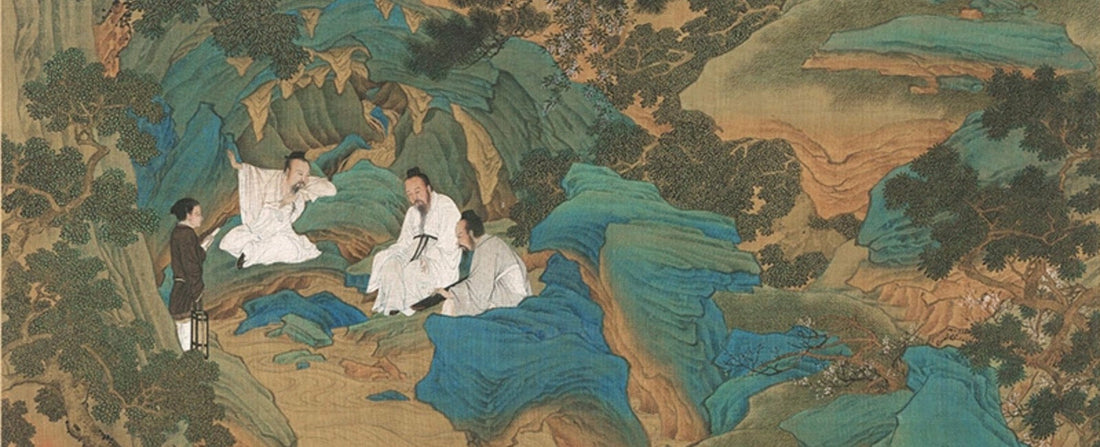
All You Need To Know About Qiu Ying's “Fairyland of Peach Blossoms” Chinese Artwork
Share
The Utopia Beneath Blossoms
By Qiao Wen, Heritage Advisor & Curator of Stories
There are paintings that feel like memories of a place you've never been, yet deeply long for. Fairyland of Peach Blossoms (桃源仙境图), attributed to Qiu Ying of the Ming dynasty, captures such a longing—a vision of poetic escape, drawn not just in brushstroke, but in spirit.
I first encountered this scroll on a spring morning, its colours soft yet resonant on silk, the peach blossoms blooming as if they remembered the poem that birthed them. It was not a scene to be examined; it was a scene to step into. Like Tao Yuanming’s fable that inspired it, the painting offered not just beauty, but reprieve.
Harmony Between Color and Philosophy
Qiu Ying, one of the great painters of the Ming dynasty, was known for translating poetry into picture. His brush moves with the clarity of thought and the gentleness of nature.
As I traced his lines through the digital archive of the Tianjin Museum, I marvelled at how ink and colour could carry so much breath. He paints not to dazzle, but to offer stillness. Using ink and colour on silk, he crafts a world that balances precision with quiet lyricism.
In Fairyland of Peach Blossoms, there is no dramatic tension. Only flow. Trees bloom. Streams curl. People dwell in harmony. The scene breathes with a stillness that is not stagnant but sacred. Even the peach blossoms seem to exhale.
Each time I return to this painting, I find myself slowing—not to analyse, but to listen.
The Ming Ideal of Retreat
To the scholar-artists of Qiu Ying’s time, retreat was not avoidance, but clarity. In escaping the distractions of court or commerce, one could return to the self, to nature, to essence.
This scroll gives form to that philosophical desire—rendering not just a place, but a way of life. It is not about escape, but return. A return to what is whole, untroubled, and attuned.
I remember thinking, as I studied the tiny figures nestled beneath the peach trees, that they did not seem surprised to be there. This was not a hidden place found by accident. It was a realm reached by choosing quietude.
Preserved in the Tianjin Museum and accessible via the China Online Museum, the artwork endures as a mirror of our deepest yearning: to belong somewhere soft, somewhere still.
From Scroll to Silk: A Dream You Can Wear
When we adapted Fairyland of Peach Blossoms into a scarf for Tang Heritage, I knew we weren’t simply framing a scene—we were preserving a mood.
The original scroll’s palette is delicate, touched with faded spring pinks and celadon greens. But silk asks for light. To give the painting motion, we gently lifted the tones, allowing the blossoms to shimmer and the water to flow anew. The composition was adapted so that the peach grove could encircle the wearer, inviting the viewer into the scroll—no longer as an observer, but as one of the travellers who never left.
I wrapped the scarf around my neck one morning and felt, for a moment, that I was standing at the edge of that fabled stream. Not as a visitor, but as someone who had always belonged there.
Enter the Paradise Between Petals
The Fairyland of Peach Blossoms heritage scarf captures a Ming-era utopia in motion—timeless, tranquil, and alive in silk.
https://tangheritage.com/products/peach-blossom-spring-heritage-artwork-silk-scarf
Crafted in limited numbers. A whisper of peace in a restless world.
